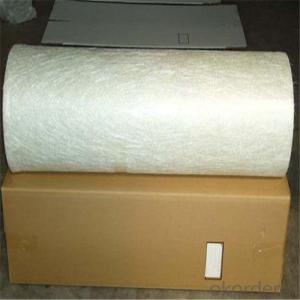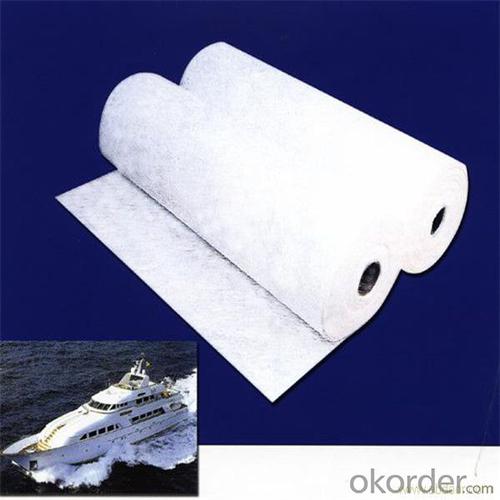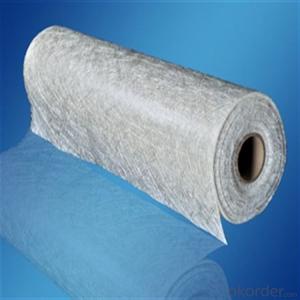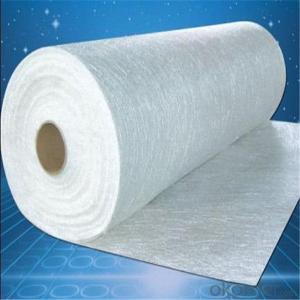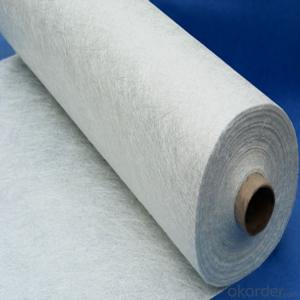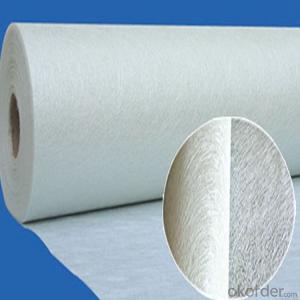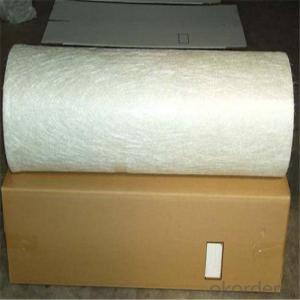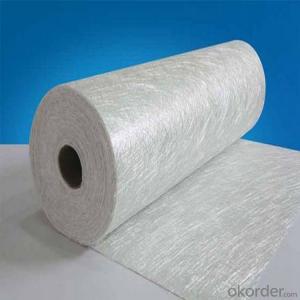Fiberglass Chopped Strand China E-Glassfiberglass Chopped Stand Mat
- Loading Port:
- Tianjin
- Payment Terms:
- TT OR LC
- Min Order Qty:
- 100 m.t.
- Supply Capability:
- 20000 m.t./month
OKorder Service Pledge
Quality Product, Order Online Tracking, Timely Delivery
OKorder Financial Service
Credit Rating, Credit Services, Credit Purchasing
You Might Also Like
Quick Details
| Technique: | Chopped Strand Fiberglass Mat (CSM) | Dimensions: | 450gsm | Mat Type: | Continuous Filament Mat |
| Fiberglass Type: | E-Glass | Softness: | softness | Place of Origin: | Jiangxi, China (Mainland) |
| Brand Name: | cnbm | Model Number: | 450gsm | color: | white |
| fiberglass type: | E glass | product: | e-glass powder chopped stand mats | binder: | powder or emulsion |
| width: | 1040 or 1270mm, as your requirement | weight: | 30 or 45kg/roll | paper tube diameter: | 90mm |
| outer diameter of roll: | 256mm | packing: | plastic film+carton box + pallet |
Packaging & Delivery
| Packaging Details: | plastic film+carton box + pallet |
| Delivery Detail: | 15-20days |
Specifications
1.e-glass powder chopped stand mats
2.binder:power or emulsion
3.width:1040mm or 1270mm
4.weight:450gsm
Picture

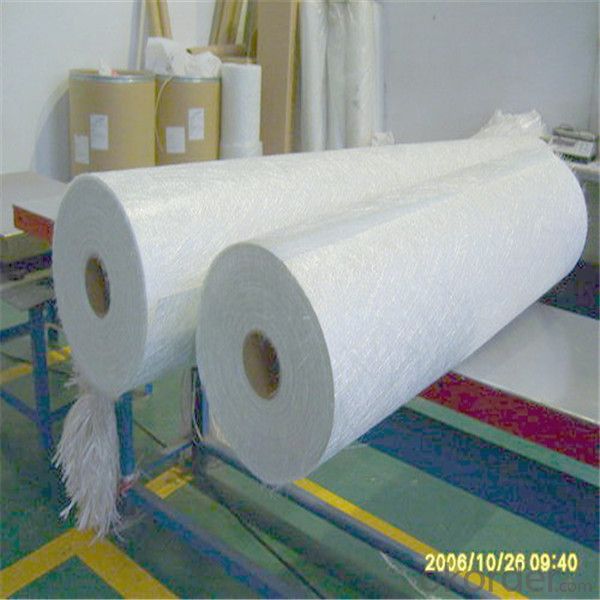




- Q: What are the manufacturing tolerances for fiberglass chopped strand?
- The fiberglass chopped strand's manufacturing tolerances differ based on the specific product and its intended application. Nonetheless, in general, the tolerances are relatively stringent to guarantee consistent quality and performance. Typically, the length of the individual chopped strands falls within a narrow range, like +/- 5 mm or +/- 0.5%. This ensures uniformity in the reinforcement material, which is crucial for achieving desired mechanical properties in composite products. Similarly, the diameter or thickness of the chopped strands is controlled within specific tolerances to ensure consistent performance. This can be specified as a percentage deviation or an absolute value, such as +/- 0.1 mm or +/- 5%. Additional manufacturing tolerances for fiberglass chopped strand may include parameters like moisture content, fiber content, and tensile strength. These parameters are closely monitored during production to meet the desired specifications and ensure the final product's quality. It is important to note that the specific tolerances for fiberglass chopped strand may vary among manufacturers and can be customized to meet the requirements of different industries and applications. Therefore, when selecting a supplier, it is crucial to consider the specific tolerances and quality control measures they adhere to, as well as any industry standards or customer specifications that need to be met.
- Q: What are the typical fiber lengths available for fiberglass chopped strand?
- The typical fiber lengths available for fiberglass chopped strand range from 1/8 inch to 1 inch.
- Q: What material is made of glass fiber pipe?
- Glass fiber cloth and resin
- Q: Is fiberglass chopped strand suitable for automotive body panels?
- Automotive body panels can be made using fiberglass chopped strand, which is a versatile material with several advantages for automotive applications. By being lightweight, it helps enhance fuel efficiency and overall vehicle performance. Additionally, its excellent strength-to-weight ratio makes it a durable option that can withstand impacts and resist deformation. The ability of chopped strand fiberglass to be easily molded and shaped into complex designs makes it particularly suitable for automotive body panels. This involves mixing the fiberglass strands with a resin matrix and then utilizing various molding techniques like compression molding or injection molding. Hence, this allows for the creation of body panels with precise dimensions and contours, ensuring a seamless fit on the vehicle. Besides, fiberglass exhibits good corrosion resistance, which is vital for automotive applications where body panels are exposed to diverse weather conditions and environmental factors. Furthermore, it possesses admirable thermal and electrical insulation properties, enhancing its suitability for automotive body panels. Overall, fiberglass chopped strand is an appropriate material for automotive body panels as it offers lightweight, durability, ease of molding, and resistance to corrosion. It has been extensively utilized in the automotive industry for many years and remains a favored choice for manufacturers.
- Q: What are the disadvantages of using fiberglass chopped strand?
- One disadvantage of using fiberglass chopped strand is that it can cause skin irritation and respiratory issues if proper protective measures are not taken. Additionally, fiberglass chopped strand can be brittle and prone to breaking, which may result in reduced structural integrity and durability. The process of working with fiberglass chopped strand can also be messy and require special equipment, leading to increased costs and complexity.
- Q: Does fiberglass chopped strand have any water absorption properties?
- The absence of water absorption properties characterizes fiberglass chopped strand. This is due to its composition of inorganic materials, like glass fibers, which do not easily soak up water. Moreover, the manufacturing procedure frequently involves the application of binders or coatings that additionally decrease water absorption. Consequently, fiberglass chopped strand finds widespread use in situations necessitating resistance to moisture and water, including boat construction, automotive components, and roofing materials.
- Q: What are the transportation considerations for fiberglass chopped strand?
- Transportation considerations for fiberglass chopped strand include ensuring proper packaging and securing the material to prevent damage during transit. Fiberglass chopped strand is typically packaged in bags or boxes, and it is important to choose packaging that is sturdy enough to withstand the rigors of transportation. In addition to packaging, it is essential to secure the fiberglass chopped strand properly to prevent shifting or movement during transport. This can be done by using straps or other secure fastening methods to hold the packages in place within the transportation vehicle. Another consideration is the weight and size of the fiberglass chopped strand packages. It is important to accurately estimate the weight and dimensions of the packages to ensure compliance with weight restrictions and to determine the appropriate type of transportation vehicle needed. Furthermore, it is crucial to consider any special handling requirements for fiberglass chopped strand during transportation. This may include protecting the material from extreme temperatures, moisture, or other environmental factors that could potentially impact its quality. Lastly, it is important to be aware of any regulations or guidelines that govern the transportation of fiberglass chopped strand. This could include compliance with hazardous materials regulations, if applicable, or following specific shipping requirements mandated by regulatory bodies. By considering these transportation considerations, it is possible to ensure the safe and efficient transportation of fiberglass chopped strand, minimizing the risk of damage or loss during transit.
- Q: Can fiberglass chopped strand be used in the production of medical devices?
- Yes, fiberglass chopped strand can be used in the production of medical devices. Fiberglass is a versatile material that possesses several desirable properties, including strength, durability, and chemical resistance. These qualities make it suitable for various applications in the medical industry, such as orthopedic devices, prosthetics, surgical instruments, and dental products. The use of fiberglass chopped strand in the production of medical devices offers several benefits. Firstly, fiberglass can be easily shaped and molded into complex designs, allowing for the production of customized medical devices that perfectly fit a patient's needs. Additionally, fiberglass is lightweight, which is advantageous for medical devices that need to be portable or worn on the body. Another important aspect is that fiberglass is non-toxic and does not react with bodily fluids or tissues. This makes it a safe material for use in medical devices that come into contact with the human body. Fiberglass is also resistant to corrosion, which ensures the longevity and durability of medical devices. Furthermore, fiberglass can be combined with other materials, such as resins, to enhance its properties. For example, the combination of fiberglass and resin can create a composite material that is stronger and more rigid, making it suitable for applications that require high strength and structural integrity. However, it is essential to note that the specific application and requirements of the medical device should be considered when choosing fiberglass chopped strand. Different types of fiberglass, such as E-glass or S-glass, may have varying properties that make them more suitable for specific medical device applications. Overall, fiberglass chopped strand can indeed be used in the production of medical devices, thanks to its strength, durability, chemical resistance, and customization capabilities.
- Q: How does the flame retardancy of the chopped strand affect its performance?
- The performance of the chopped strand is heavily influenced by its flame retardancy. When a chopped strand is flame retardant, it means that it has undergone chemical treatment or coating to prevent or delay the spread of fire. This characteristic is highly desirable in applications where fire safety is a concern. The flame retardant properties of the chopped strand greatly enhance its overall performance. Firstly, it adds an extra layer of protection against fire hazards, reducing the risk of ignition and fire spreading. This is particularly important in industries that deal with flammable materials, such as automotive, aerospace, and construction. By delaying or preventing the spread of fire, the flame retardant chopped strand helps to minimize potential fire damage and loss. Furthermore, the flame retardancy of the chopped strand improves its resistance to heat and thermal degradation. Non-flame retardant materials can quickly deteriorate, lose strength, and emit toxic gases when exposed to high temperatures. In contrast, flame retardant chopped strands can withstand elevated temperatures for a longer time before suffering heat-related damage. This not only ensures the material's structural integrity but also reduces the release of harmful fumes, promoting the safety of individuals near the fire. Additionally, the flame retardant properties of the chopped strand can contribute to increased product longevity. By reducing the risk of fire-related accidents and damage, it helps prolong the material's lifespan, enhancing its durability and performance over time. This is particularly crucial in applications where the material is exposed to potential fire hazards or where failure due to fire could have severe consequences. In conclusion, the flame retardancy of the chopped strand is a critical factor in determining its performance. It provides improved fire safety, resistance to heat and thermal degradation, and contributes to the material's overall durability and longevity. Therefore, opting for flame retardant chopped strands can significantly enhance the performance and reliability of various products and applications.
- Q: Is fiberglass chopped strand lightweight?
- Yes, fiberglass chopped strand is lightweight.
Send your message to us
Fiberglass Chopped Strand China E-Glassfiberglass Chopped Stand Mat
- Loading Port:
- Tianjin
- Payment Terms:
- TT OR LC
- Min Order Qty:
- 100 m.t.
- Supply Capability:
- 20000 m.t./month
OKorder Service Pledge
Quality Product, Order Online Tracking, Timely Delivery
OKorder Financial Service
Credit Rating, Credit Services, Credit Purchasing
Similar products
Hot products
Hot Searches
Related keywords

